Forgot to set your eggs out ahead of time? No problem! My easy method will quickly bring eggs to room temperature–no fancy tools or techniques required!
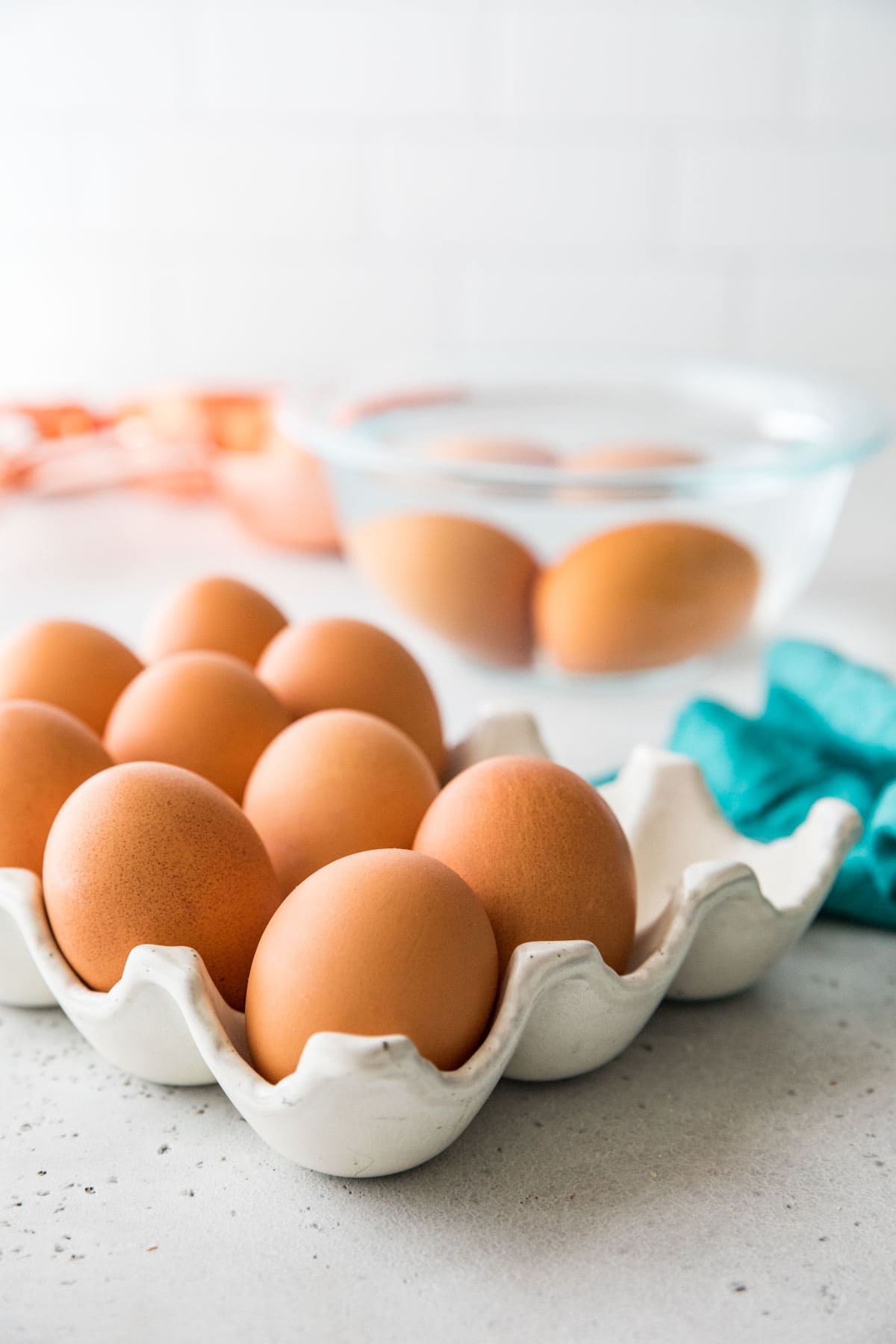
Room Temperature Eggs in 10-Minutes!
Room temperature eggs: you’ve seen them in many of my recipes, from my 1-hour cinnamon rolls to my cheesecake. If you’ve made those recipes with straight-from-the-fridge eggs and they’ve turned out decently–great! But if you want truly spectacular results, you’ll use room temperature eggs.
I know not everyone has the time to bring eggs to room temperature (sometimes it can take up to 2 hours!), so today I’m letting you in on my favorite little trick!
Using room temperature eggs (unless noted otherwise) will make it easier to combine your ingredients, producing more cohesive batters and doughs and ultimately, better results. The method I’m sharing today is quick and easy; it’s perfect for times when you make a spur-the-moment decision to bake chocolate chip cookies, or when you accidentally overlook a recipe note to use room temperature eggs (it happens to all of us!).
What You Need

You don’t need any fancy tools to bring eggs to room temperature; in fact all you need are:
- Eggs. Use as many cold, raw, whole eggs (straight from the fridge!) as your recipe calls for.
- Warm water. I recommend using 1½ cups of warm water per egg. Make sure your water is warm, but not hot. We don’t want to accidentally cook our eggs!
SAM’S TIP: I recommend that you bring your eggs to room temperature before you start measuring the rest of your ingredients, that way everything will be ready at the same time.
Remember, this is just an overview of the ingredients I used and why. For the full recipe please scroll down to the bottom of the post!
How to Bring Eggs to Room Temperature
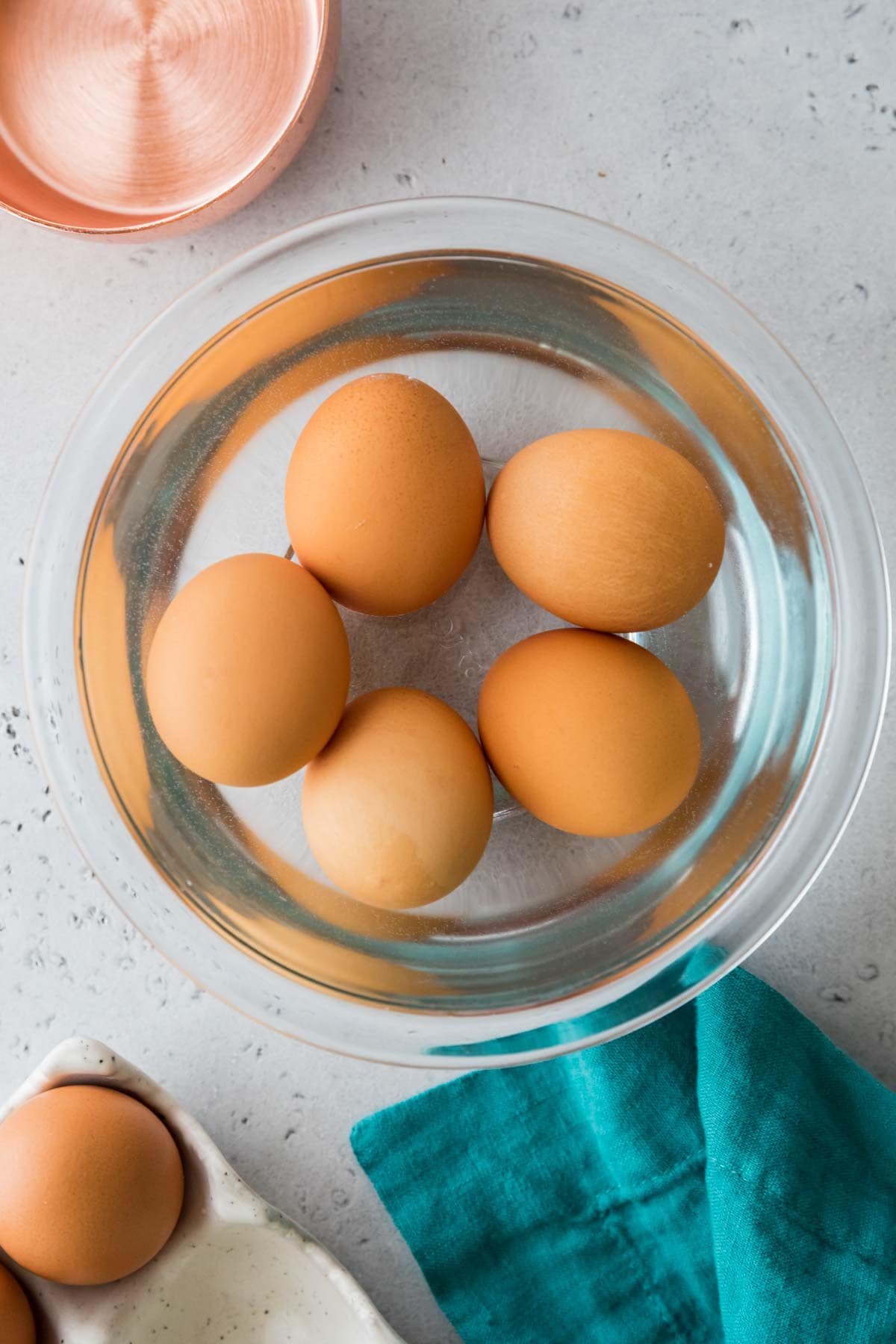
- Place eggs in a heatproof bowl.
- Cover with warm water and let sit for 10-15 minutes.
- Dry the eggs, repeating the process if necessary.
- Use as needed.
SAM’S TIP: You can bring your eggs to room temperature even faster by placing them in a bowl under a tap of warm running water. To do this, simply let the water continuously flow over the eggs for 2-5 minutes, then dry them off and use as desired. I typically don’t recommend this method since it can waste a lot of water, but if you’re in a rush and don’t have time to wait the full 10-15 minutes, you can do this instead.

Frequently Asked Questions
Using room temperature eggs helps your ingredients combine more cohesively (and ideally all ingredients should be at room temperature unless otherwise indicated). This ultimately makes for better batters and doughs, and therefore, better baked goods. I know it’s an extra step, but trust me, it’s worth it!
It’s hard to know exactly when your eggs will transition from warming to full-blown cooking in the microwave, so I don’t recommend this. Plus, microwaving eggs in their shells causes them to explode–and no one wants to clean up that mess!
Obviously if a recipe calls for room temperature eggs (many cake, pancake, and muffin recipes call for them), you should use room temperature eggs. But really, if a recipe calls for any room temperature ingredients, it’s probably a good idea to make sure all of your ingredients are room temperature, including the eggs.
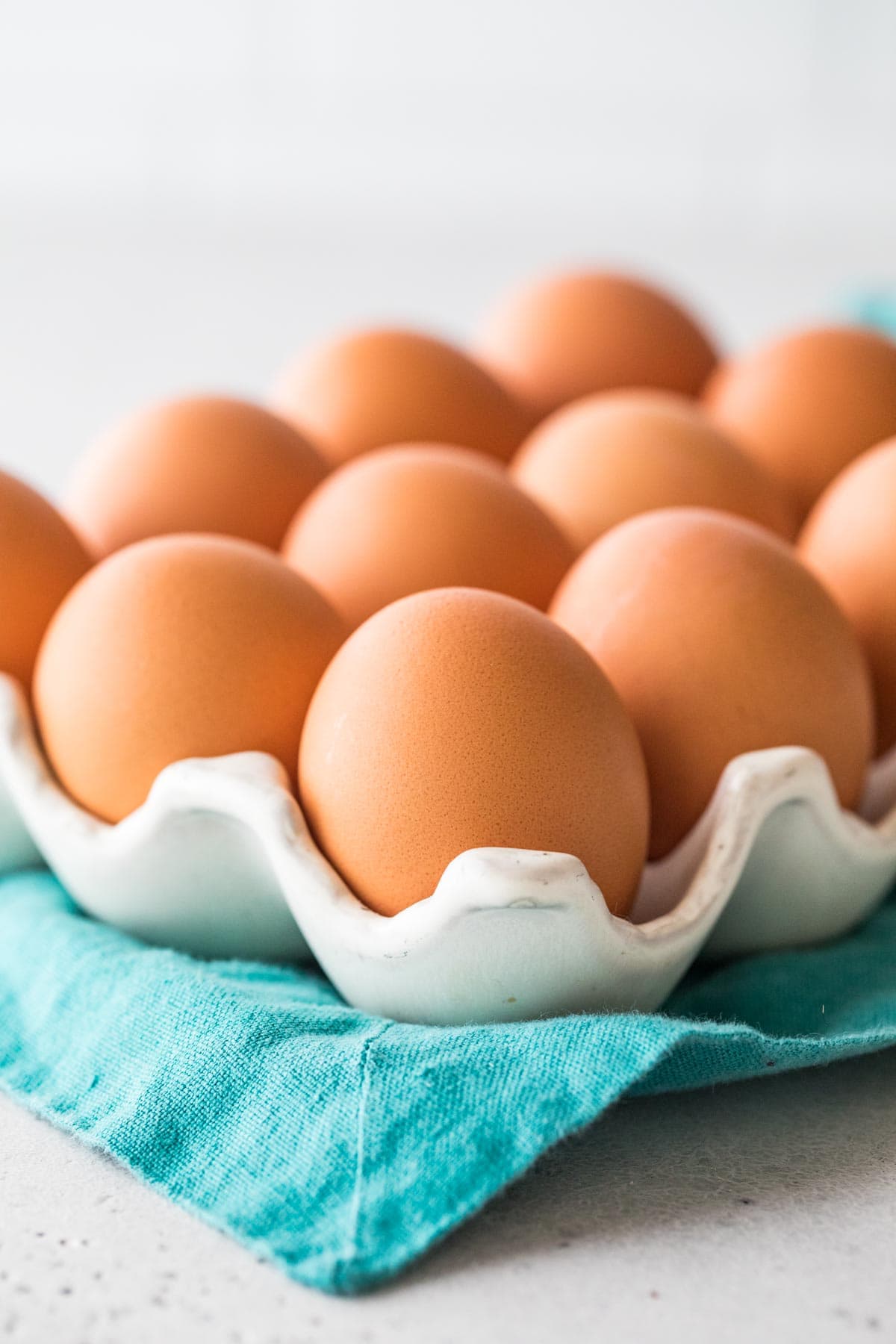
I hope this technique is helpful for some of you! If you’d like to see more posts like this one (maybe how to quickly soften butter?!), let me know in the comments below 👇
Let’s bake together! I’ll be walking you through all the steps in my written recipe below! If you try this recipe, be sure to tag me on Instagram, and you can also find me on YouTube and Facebook

How to Quickly Bring Eggs to Room Temperature
Ingredients
- 2 eggs
- 3 cups warm water
Recommended Equipment
- 1 Heatproof bowl
Instructions
- Place your cold eggs in a heatproof bowl.2 eggs
- Cover the eggs in warm (not hot!) water*.3 cups warm water
- Let the eggs sit for 10-15 minutes.
- Drain the water and dry your eggs** with a towel. If the eggs still feel cold, repeat the process with fresh warm water.
- Use as desired.
Notes
Nutritional information is based on third-party calculations and should be considered an estimate only. Actual nutritional content will vary based upon brands used, measuring methods, cooking method, portion sizes, and more.

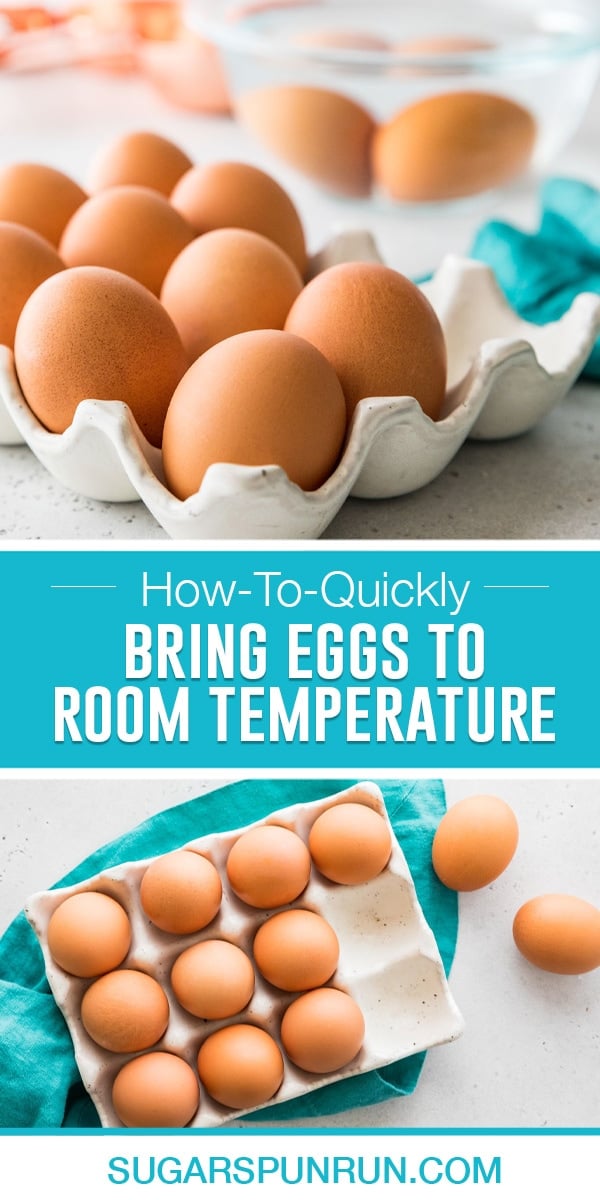


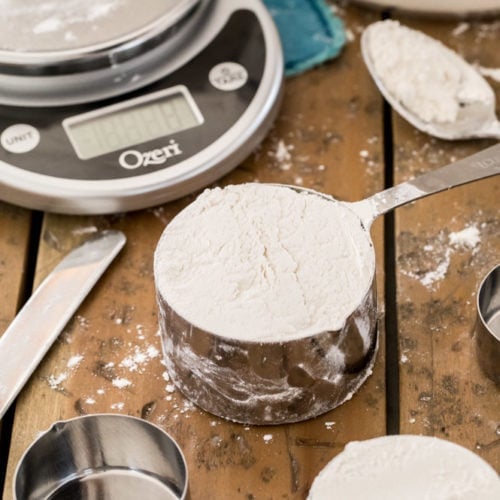
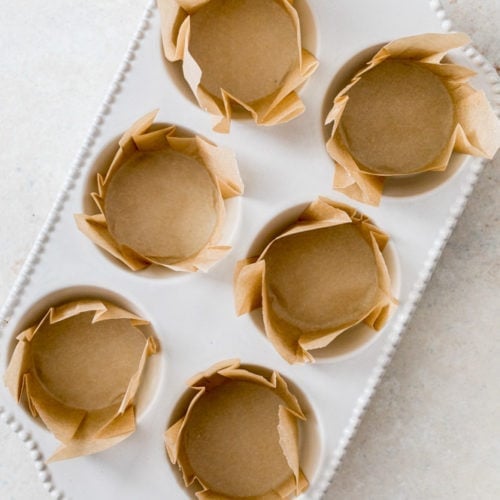




Bee Kay
If you need them warmed faster, use a larger bowl of water, and to lift them up partway in the water, such as an upside down bowl within. Simple thermodynamics will take over where you had been using “running water”, allowing the water cooled by the eggs to sink, drawing more warmer water towards the eggs at the same time. Yes, it also uses more water, but you don’t have to worry about eggs bouncing against one another under a running tap, or babysit the process at all.
For me, the eggs will warm up long before I have taken out and measured all of my ingredients for whatever recipe needs room temperature eggs.
BTW – my tap water is VERY hot, and I’d have nearly soft boiled eggs if I used my hot water straight from the tap. Guaranteed to kill yeast on contact! (about 140-150 degrees F.) My water is at 110 degrees before the eggs go in.
Barbra-Anne
This trick allows me to bake on the fly! The struggle was so real waiting for eggs to come to room temp just on the counter. Thank you for sharing!
Sam
You are so welcome! It’s been a life changer for me too! 🙂
Angela
This is what I do. I figured it out on my own but it’s genius! I use hot tap water and it only takes a few minutes. I twirl the egg in it, let it set a couple minutes and then switch it out for more hot water and let sit another minute or so. It never cooks the eggs. I don’t think tap water is hot enough to cook them. And I never measure the water. It goes about halfway up the egg in my bowls.